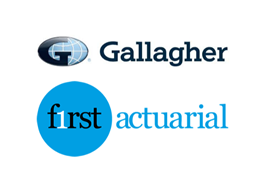Data Analysis: Quantitative easing has exacerbated the movement of pension risk from employers to individuals, placing the future of the entire system at risk, according to a report published last week.
Successive waves of QE from the Federal Reserve, Bank of England, Japan’s ‘Abenomics’ and most recently the European Central Bank’s programme havepushed government bond yields down, inflating pension scheme liabilities.
All risks in retirement planning are being transferred from those who could not manage them to those who do not understand them
The report, entitled ‘How pension plans are responding to financial repression’ was published by forecasting centre Create Research and asset manager Amundi to look at the effect of QE on pension schemes. It surveyed 184 schemes across Europe.
One of the key claims of the report is that the increasing personalisation of pension risk will damage the industry.
Shifting risk to consumers
The report states: “Across Europe, risk has been progressively personalised. Employees are obliged to bear the brunt of all risks in retirement planning, as part of the structural solutions that are hastening the demise of defined benefit plans and promoting the rise of defined contribution.”
What will financial repression do to the personalisation of risk in particular and the pension industry in general?
Source: Amundi/Create Research
The report describes the shift as follows: “All risks in retirement planning are being transferred from those who could not manage them to those who do not understand them.”
Other research bears out this conclusion. This year’s Scottish Widows Retirement Report found low levels of understanding across all main types of retirement products, with the only 31 per cent of 65-69 year olds fully understanding workplace pensions - the highest level among any cohort.
Source: Scottish Widows
One of the most notable effects of QE has been the downward pressure created on interest rates and the deleterious effect that has in turn had on pension scheme funding levels.
The research reflects this, with 57 per cent of respondents saying it has negatively impacted their scheme.
Source: Amundi/Create Research
For risky assets, 39 per cent believed it was positive and 28 per cent negative, with the remainder unsure or neutral. For hedging assets it was seen as 15 per cent positive and 58 per cent negative.
The negative perception from a hedging perspective is unsurprising. The most recent Purple Book report from the Pension Protection Fund showed an aggregate funding deficit of UK DB schemes of -£39.3bn.
Schemes proposed a range of measure in response, the most popular of which was to “reconsider what ‘risk-free’ bonds mean”.
The report says: “There are no risk-free bonds in the widely accepted sense. By definition, such an asset is meant to exhibit: the lowest returns in the investment pecking order, zero correlation with risky assets and zero difference between its expected and actual returns. In practice, that has not been the case for a long while.”
Source: Amundi/Create Research
A further effect of low yields, the report claims, has been to drive investors into riskier assets than they might have previously chosen. This has led to stretched valuations, price insensitivity, stretched valuations and crowded trades.
“Even a sound tool like liability-driven investing has turned precarious,” the report said. “Its implied derisking into ‘safe assets’ is nothing more than re-risking into wildly overpriced bonds.”














